Matador Network's Blog, page 2240
July 21, 2014
5 ways to waste a travel experience
TRAVEL CAN BE an invigorating, enthralling, life-affirming, eye-opening, magical mystery tour of spectacular and epic proportions, the likes of which shall have you reminiscing wistfully for decades to come about that time you did _____ in _____ and _____ happened.
Or it can be squandered on McDonald’s and imported Western beer and forgotten in a haze of alcoholically induced memory problems and shoddy Hollywood film productions.
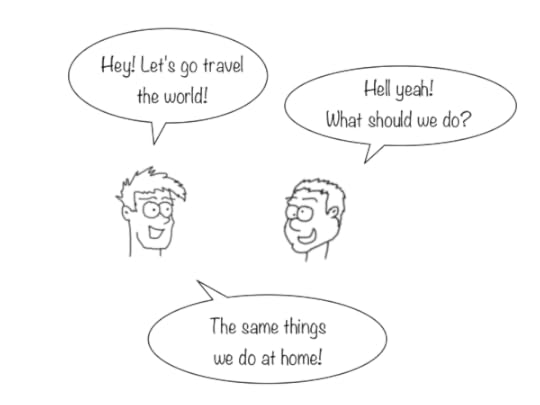
Image by author
We’ve all been there. Galavanting around the world is fun and all, but sometimes it’s just way too easy to stay inside and watch The Hangover Part XIV and dine on a poorly constructed excuse for cuisine whilst peering out the window periodically to wonder if maybe there’s more to the world than…nothing.
And there is.
And here’s how to ruin it.
1. Too much internet
Sorry, internet. I love you. Your endless treasure troves of random factoids and cat pictures provide me no end of education or amusement. Many have been the hours I’ve spent exploring your depths and wonders, and intoxicating have been the wisdom I’ve gained and laughter I’ve exuded.
But I need more.
The internet is one of the easiest ways to suck up all the time you’ve got in a day, but to be honest, it’s not nearly as awful as people make it out to be. The internet is merely the collective voice of billions. Is it so wrong to listen to what they have to say? And what is travel but experiencing those voices and homes firsthand?
But it’s still second-rate to walking out the door, accidentally discovering some random bakery or whatever, and savoring the serendipitous moment a series of accidents have presented to thee.
Internet is great. Keep its greatness at just enough to stay great, but not devour every moment of the day in its endless jaws. Catch up on the cute cat pictures later.
2. The English clique
Sorry, world. English is king. The British Empire planted its weeds all over the world, and the US carried the torch for centuries too. Then the internet drove the last nail into the coffin of any non-Latin alphabet hoping to make a comeback. Plus: Hollywood.
English has won.
Oh, and all those silly people saying it’s going to be Chinese one day? HA! Have you seen Chinese lately? No. Just no. Sure, a billion people speak it, but they’re pretty much all in China, and they’re trying to learn English a whole lot faster than any Americans are trying to learn Chinese. Maybe by 2300. Maybe.
Okay, back to the point. Chances are if you visit any hostel, you’ll hear English spoken almost exclusively between guests, and it’s mostly native speakers doing it. Since Westerners currently make up most of the backpacking demographic, you can easily surround yourself with nothing but familiarity.
It’s not so bad if you’re communicating with people from all over the world, but it can be something of a crutch if you only talk to fellow Westerners. Sure, maybe they’re cool, but if you fly all the way to the other side of the world, it’s good to mix things up. Try doing something stupid in public, like walking into a telephone pole. Good fortune is sure to follow!
3. Irish pub quarantine
This is part 2 of the “Only talk to other Westerners” motif. Going only to Western-style hangouts.
“Dude, let’s go to the Irish pub! They’re exactly the same all over the world and we won’t experience anything new!”
Sigh.
Once again…it’s not like Irish pubs are bad. They’re pretty great. No wonder they’ve taken over. And to be honest, a professionally run Western-style pub might be a whole lot better than a poorly run hovel set up to capitalize on drunk foreign tourists. So fair enough.
But traveling shouldn’t be just about sightseeing and then hibernating inside a sheltered cave of predictable solitude. Want some familiarity? Okay, go for it. Sometimes. But for every visit to the Irish pub, make sure you visit some random hole-in-the-wall nothing bar in the middle of nowhere with only one bartender and six chairs. Good things will happen, I promise.
4. The drunken roller coaster
Here’s the stupidest thing I’ve ever heard:
“Dude, I was soooo drunk last night! It was awesome! I don’t even remember what happened!”
You know what’s stupid? Paying for experiences and not experiencing them. Memory problems count, kids!
Getting drunk and not remembering the amazing times you claim to have had is like watching a movie with the sound turned off. Forgetting amazing things is indistinguishable from not doing amazing things in the first place! But more expensive!
A fun game to play is to go up to the people who don’t remember what happened the night before, and make up a horrifically terrifying tale of embarrassment and public displays of sheer idiocy so awful they’ll think twice about getting that trashed again. See how far you can push the boundaries of believability and still have them fall for it!
5. Formulaic whatever
I once heard a conversation in a hostel that went something like this:
“Know anywhere good to eat around here?”
“Hmm, well the guidebook says…”
“Nah, I don’t like guidebooks. It’s just one guy’s opinion.”
Somehow he failed to notice how the human to which he was speaking was also one person.
Now that’s not to say one set of instructions or another are to be followed. Chances are that any strategy is going to fall flat on its face at some point, and adhering too closely to any good-luck-charm travel tactic is going to be silly. Such as:
Never obeying the guidebook
Only obeying the guidebook
Never listening to hostel buddy suggestions
Only listening to hostel buddy suggestions
Never going off the beaten track
Only going off the beaten track
I could go on, of course, but I think you get the picture. I’ve had great restaurant suggestions from backpackers as well as locals, and I’ve seen backpackers either religiously adhere or steadfastly refuse to do things a certain way, thinking guidebooks are always bad or that the big touristy attractions are always stupid, and so forth.
Lesson learned: Change things up every once in a while. Sometimes studying the city ahead of time works out, and sometimes ignoring everything and wandering around randomly until something ridiculous happens works out quite nicely as well. You never know. So make a plan, and screw things up sometimes. 
This post originally appeared at Snarky Nomad and is republished here with permission.

Hong Kong through a young photographer’s eyes
I’VE NEVER VISITED HONG KONG, but this video has me seriously considering a trip. Hyoin Bae, a student from South Korea, is very lucky that she gets to live and work in such an inspiring city. I enjoyed her version of “24 hours in ___” because it wasn’t filled with, “You should do this! You should go here!” generic travel suggestions.
Bae’s video diary is proof that the travel experience is subjective. She made the city of Hong Kong her own, just like I will when I go. 

11 signs you grew up Mexican in the US

Image by Lara Cores
1. Kids’ parties that still get buck wild
I’ve lost count of the many parties, and I mean hard-core parties, that I’ve ended up at that I thought were a huge milestone for the party-thrower: 30th birthday, quinceañera, etc. only to find out that the bash had started as a party…for a five-year-old!!! I’ve always wondered if all the fights with all the borrachos at these parties were ever started by a kid wanting his toy back.
2. Total failure at correct name pronunciation
If you happen to have an easy-to-pronounce name like Juan Lopez, you might never experience this, but for the rest of us with lots of “rrrrrrrs” in our names — we just get used to hearing our name mangled. And if we decide to pronounce our name “in Spanish” when being introduced, we always have to say it more than once.
3. Saturday visits to Grandma’s that are more like Don Francisco concerts
I don’t know how or why, but somehow I spent quite a few Saturday nights visiting my Grandma. I know my Grandma loved me very much, but I don’t think I ever got to talk to her during any of my visits. We would always end up watching the ultimate “party in a show” called Sábado Gigante together, but since my Grandma was hard of hearing, it always felt like a two-hour Don Francisco screamfest.
I had more than one nightmare of Mr. Frank and El Chacal and his trumpet chasing me around while my Grandma watched, laughing hysterically. Where was Jerry Springer when I needed him?
4. Barbecue getting overpowered by carne asada
No matter how much you might be craving a delicious and juicy burger from a backyard grill, with your Mexican friends and family you must always settle for carne asada. Don’t get me wrong, chelas con carne asada with friends is like a religion, but dang it, a solid burger isn’t a bad trophy to earn after a long workweek.
5. Total language barrier with neighborhood kids when it comes to playing with superheroes
All the neighborhood kids only had Superman and Batman. I had those two, but I also had their father: el Chapulín Colorado, the red grasshopper.
“No contaban con mi astucia,” “Síganme los buenos,” or “Que no panda el cúnico” are three of the most popular quotes in any Spanish-speaking Mexican household. The unfortunate thing was that whenever you translated such amazing quotes from the “red cricket” to your non-Spanish-speaking friends, it wasn’t the same. “You weren’t counting with my cunning,” “Follow me…the good?” and “Pobody nanic” (as in, “nobody panic”) were not exactly easy to translate or, even harder, understand. Thank God I never tried to translate “pastilla de chiquitolina.”
6. Celebrating on Christmas Eve and New Year’s Eve
While many of my friends got to open their presents on Christmas day, I always got to open them after eating turkey and romeritos on Christmas Eve. Growing up Mexican in the US means you never get to experience what it feels like to wake up on Christmas day and run down the stairs to open your presents. No worries, I kind of always liked opening my gifts ahead of everyone else.
For New Year’s, my friends knew that I would never party with them because I had to do the 12 grapes and champagne thing with my parents, sisters, aunts, uncles, and cousins. The first time I spent a New Year’s Eve outside my home I felt socially inept and was in such shock that I missed the countdown.
7. Taking Spanish for an easy A
One of the cool benefits of growing up Mexican in the US is the ability to cruise through the foreign-language requirement in school. To some, French might be quite appealing; to others, German might be the challenge they’re after; but to many, Spanish is just the smooth sailing that’s desired. Your Spanish abilities also made you the go-to person whenever your non-Spanish-speaking friends would struggle with their homework.
Oh, and the joy of how Mr. Stetson, the popular Spanish teacher at my school, would always avoid me in the hallways, afraid I would end up correcting even his slightest attempt at conversation with me.
8. Having various options for the World Cup
Nothing in the universe can top the fun, excitement, and utter craziness of following your team in a World Cup every four years. Actually, there is something: having two teams you can truly call your own to root for. Whether you’re watching “futbol” or “soccer,” there’s always one team that will pick you up when the other fails you.
Too bad every single World Cup I can remember has seen neither of my teams advance beyond the quarterfinals. If only I had been born Brazilian-Italian.
9. Appreciation of “authentic” Mexican food from Mexico vs. “delicious” American burritos
Many Americans travel to Mexico only to return home disappointed about the food, saying it wasn’t “Mexican enough,” and when Mexicans visit the US, they come home crying about how “un-Mexican” Mexican food is north of the border. Growing up Mexican in the US affords you the opportunity to truly enjoy and appreciate an “American” bean burrito while also being able to salivate over just about all the food when traveling in Mexico.
10. Trilingualism: English, Spanish, and the coolest language in the world, Spanglish
Being bilingual is pretty cool, but being trilingual rocks — especially when Spanglish is your third language. Speaking Spanglish is perfect because when you’re speaking English there are always words, ideas, or concepts that are way better expressed in Spanish, and vice versa. You might as well aprovechar Spanglish to save tiempo, right?
11. The lumping together of all Latinos as “Mexicans”
All my non-Mexican Latino friends are used to being called Mexicans, and most of them hate it. I don’t blame them. I don’t think an American would like to be called Canadian or a Korean, Japanese. Even though many ignorant people think we’re all “Mexicans,” we are not. I do, however, love the bond I feel I share with my Latino brothers and sisters in the US. 

Congo River odyssey: An interview
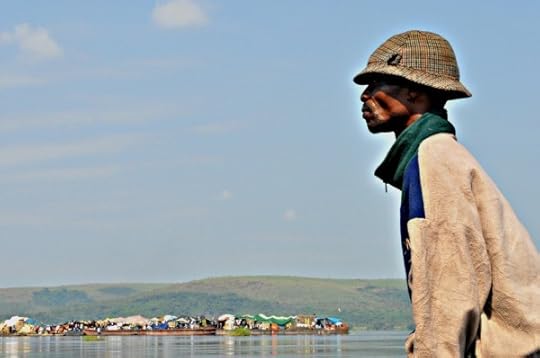
Photo: jane boles
WHEN WE LAST SPOKE to Tracy Angus-Hammond, she was about to set off on a trans-African expedition from South Africa to Tunisia, crossing a number of beautiful — and a number of sketchy — regions on the way. I caught up with her almost a year on to see how the journey had gone, and to find out more about how illness on the Congo River very nearly brought the journey to an early, tragic halt.
* * *
RS: When we last spoke, you were in the final stages of planning a trans-African roadtrip. Was it in your plans at the time to end up sailing down the Congo River in the heart of the DRC?
TAH: When we first spoke we were actually planning on getting from East to West Africa via the Central African Republic. As our departure date neared, though, the conflict in CAR escalated and visas stopped being issued to South Africans. We as such had no choice but to change the route and decided to head instead through the DRC, the only way we could find to get across Central Africa.
We knew up front that this would involve some time on a barge floating down the Congo River, since there was no other way to get the 1700km from Kisangani to Kinshasa.
The journey downriver was pretty terrifying, as it turned out. Can you talk a little about what went wrong?
Yeah, the month we spent on the MS Magnificat traveling down the Congo River at an average speed of 8km/h was pretty tough! But the month leading up to the barge trip was no piece of cake either. The state of the roads meant we couldn’t travel faster than 20km/h, the police or army roadblock every 20km (all wanting a bribe) slowed us down considerably too, and the difficulty and expense of getting supplies added to the stress.
We were attacked by some police in Kisangani and one of the cops actually broke our car keys in my hand trying to get them from us — thank goodness we’d packed the spares. We had our car illegitimately impounded, also in Kisangani, and in between all of this we were constantly being hassled by immigration and customs officials, so by the time we finally did get on the barge we were feeling pretty beaten up and weary.
Weeks into the river trip, Matthew contracted malaria…
The first problem with the actual barge journey was that a trip we were told would take 10 days ended up taking 30 days and so we were short of food and water. We had packed enough for 14 days but this was all we had space for — 350 litres of water takes up LOTS of space! This meant we were rationing food and water from week two on the barge, and for the last 10 days we were down to one can of food shared between the two of us per day — that’s it!
Conditions on the barge were cramped to say the least. There were 800 of us living between 50 cars and 600 tons of cargo (mainly yams and cassava) in a space of 60m by 60m. There was one toilet (just a small room with a hole in the barge floor) between all 800 of us, and this room also doubled as the ‘shower’ room (where we washed with buckets of water hauled out of the river). And it was hot…really, really hot! The flat metal structure turned into a frying pan during the day, and so the 45 degrees Celsius temps turned into 50 degrees on the barge.
Weeks into the river trip Matthew contracted malaria, and this happened in the most remote part of the Congo where there was no cellphone signal or any small towns or villages where we could get help. Thank goodness we did have malaria treatment with us and, having both had malaria before, we recognised the symptoms and got him on the treatment within three hours of the first symptom. After he completed a full course but had got no better I really started to panic. He had very swollen veins on his head and had incredibly bad headaches, and we began to fear it was cerebral malaria.
At this stage of the journey, we were actually in international waters, with the DRC on our left and Congo Brazzaville on the right, so even though there was no phone signal in the DRC I did manage to find someone with a Congo B sim where there was signal. They let me use their phone, which had one minute of credit on it, and standing on top of the barge, on a chair on a table, was able to get a rushed call out asking for help. Later that day we got a call back saying a speed boat would be leaving at 04:00 the next morning to fetch us and get Matthew to a hospital. Next morning I packed up our tent and stashed all our stuff in our car and started the anxious wait for the rescue boat to arrive.
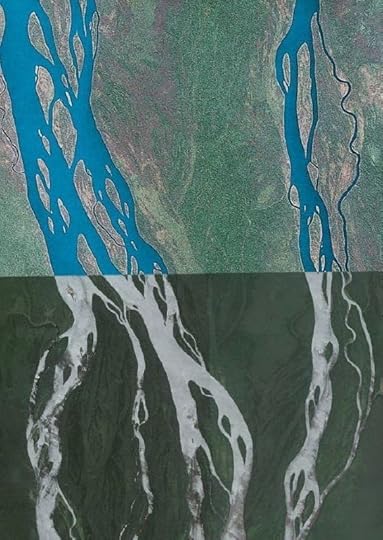
Image: ::Alejandro::
By this stage there was no signal in either country and so we could not contact any of the people trying to find us and find out where they were or when to expect them. They also couldn’t get hold of us and so didn’t know where exactly we were. The Congo River is 14km wide in some parts and full of large islands that mean there are several channels in the river. We could easily have been in the same area as the rescue boat but simply not seen each other. By late afternoon we realised they weren’t coming, and I now understand the expression “a crushing disappointment” — I literally had chest pain at the realization they weren’t coming, and that didn’t go away until they did eventually find us the next day at 15:30. At that moment we learned the true meaning of knee-buckling relief. Seven hours later we were in Kinshasa and at a hospital where Matt could get proper care.
The DRC was insane from start to finish, and unfortunately it fit all the worst stereotypes of what Africa is — BUT, that said, the constant “well it is Africa” comments really upset us, because Africa is not one place but 54 very diverse countries. Of the nine countries (South Africa, Namibia, Zambia, Malawi, Tanzania, Rwanda, Uganda, Kenya, and DRC) we’ve traveled through so far, the DRC was the only one that fit the stereotypes and the only one we were asked for a bribe in — proof that it’s perceptions of the continent that are stereotypical rather than the continent itself. We did also get through the DRC without paying a single bribe and are of the firm opinion that you don’t have to be part of the problem, and you don’t have to say yes just because someone asks.
In the end everything turned out okay, though? When did you realize you were going to make it through safely?
At 15:30 on the 9th of April when the rescue boat arrived. Up until that very second we weren’t sure we would make it — terrifying circumstances to exist under.
On reflection, is there anything you would have done differently in planning to cross the DRC? And were there things you were glad you had thought of beforehand?
There’s nothing about our crossing of the DRC that we could have changed, unfortunately. All the elements that made it difficult and life-threatening were beyond our control.
We were incredibly grateful that we had three courses of malaria meds with us (Matt went through two on the barge and so packing one per person is not enough). The research we’d done, before leaving South Africa, on the best ways to purify water were life saving (we used a sock, charcoal, boiling, and water purifying tablets, which we were also very glad we’d brought with us). And having been on the road for six months before all this definitely meant we were tougher than when we left and more capable of dealing with all the DRC had to throw at us. 

July 20, 2014
Your office affects how you work
I ONCE WORKED IN AN OFFICE that was completely “toxic” — bad lighting, poor HR policies, uninspiring decor, etc. Looking at this infographic, and realizing how much more on the left side my previous job seemed to be, it’s no wonder there was such low workplace morale.
Since becoming location independent, I am more attuned to what makes me a productive worker. I need natural light, fresh air from the outside, and privacy (I hate working in cafes or libraries).
I am convinced that a happy office environment fosters a company that is happy to do work. It will be interesting to see in the coming years how the workplace environment evolves, especially when technology makes it easy to telecommute, and be more efficient.
Image via The Washington Post. Click to enlarge. 

16 easy yet delicious campfire meals

Photo: U.S. Fish and Wildlife Service – Northeast Region
DISCLAIMER: If you are about to embark on the Appalachian Trail and you just finished cutting all the tags out of your t-shirts, these recipes are probably not going to work for you. So just go back to quietly weighing your socks and scheming ways to dehydrate beer.
These meal ideas will work perfectly, however, for your next music festival, car camping trip, or backyard adventure.
1. Fish tacos
Grab some white fish. Mix some taco seasoning into a little container of sour cream. Slice up some avocado with a crunchy vegetable (I like radishes or purple cabbage) and throw it all onto a grilled mini corn tortilla. Boom. Taco party.
Tip: Use tinfoil to keep the fish from falling into the fire.
2. Grilled pineapple on a burger with sharp cheddar cheese
These don’t even need condiments. However, if you absolutely cannot eat a burger without at least one condiment, I recommend spicy mustard. Crumbled blue cheese could also work here.
3. Nachos
Throw everything you would put on a nacho in a cast iron skillet: onions, black beans, jalapeños, green peppers, I don’t need to tell you what goes on a nacho. Make multiple layers. You should be doing this in your normal nacho making, but you should especially be doing it here.
Cover it all with some kind of lid (a stainless steel plate, a pot lid, another skillet) and let it sit for maybe 10 minutes. Just keep an eye on it and you’ll be fine. Top with sour cream, avocado, and sliced tomato. The best cheese for nachos is NOT Monterey Jack. It is freshly grated, extra sharp cheddar cheese. Don’t argue with me on that.
4. Salad pizza
I invented this in college. Get some pita bread. Throw it on the grill and melt some cheese on it (feta and mozzarella combo?). Take it off and top it with lettuce, tomatoes, onions, whatever. Dress it with some vinegar, olive oil, and dill. Slice it up. Pretend it’s a pizza.
5. Crispy fancy kale
Toast a sprig of kale like a marshmallow (pinkies out!). Is the fire too hot for your dainty fingers? Poke a shish kabob stick in it and quit complaining. Immediately dip your crispy kale into a mixture of soy sauce, olive oil, and hot sauce.
6. Fried bologna sandwich
Don’t turn your nose up at bologna. Throw it on the grill and make it curl up at the edges. Put it on an egg sandwich with some cheese and mayonnaise.
7. Spin-off tomato soup with grilled cheese
Get a can of whatever soup you’re partial to. Fire-roast some tomatoes over the fire and add them to the soup. Eat a grilled cheese. Grilled cheeses are even better with mayonnaise and Sambal on them.
8. Canned tomato and goat cheese pasta
Buy a can of whole, peeled tomatoes. Caramelize some onions and garlic in a pan. Add the tomatoes. Add some honey. Let it simmer while you drink a beverage. Pour it over a bowl of pasta. Mix in a huge spoonful of goat cheese. Eat it.
9. Takeout pizza
Order a pizza from a pizza joint. Ask them to slightly undercook it. Grill it over the fire. Burn the pizza box. Tell people you made it.
10. Vegetarian soldier’s meal
So you don’t eat meat. That’s unfortunate. Slice up some root vegetables (parsnips, beets, carrots) and grill them in a tinfoil pocket. This takes a little while. Keep opening it up and poking around with a fork. Take it off the fire. Top it with awesome cheese and crispy kale.
If you did eat meat, you could mix it all with ground sausage, and you would be a happier person.
11. Wild card homie scramble
Fry up some taters. I like to use regular and sweet. Throw in absolutely everything you could possibly think of. Onions, beans, beets, edamame, bacon. Make some holes and crack a couple eggs right in the pan. Mix it all up. Top with cheese and sour cream.
12. Bacon grease cornbread
You’re not watching your weight, are you? Fry up some bacon in a cast iron skillet. Remove the bacon and eat it. Keep the grease in the pan. Throw in some cornbread mixture, mix it all up, cover the skillet with a lid, and bake it over the fire. Pour some baked beans over it. Maybe add an over-easy egg and serve.
Tip: Snazz up your cornbread mix with sliced jalapeños, cheese, chopped-up bacon, or dried dill.
13. Chocolate-stuffed bananas
Peel a banana and slice it open. Stuff as much chocolate or Nutella as you possibly can in there. Wrap up in tinfoil and throw in the fire for five minutes or so. Top with fluff or toasted marshmallows.
14. S’more upgrades
Add peanut butter cups, Carmellos, Nutella, anything that is good. 

July 19, 2014
Images of consumerism in Iran

Photo via Thomas Cristofoletti/A Jazeera
HIGH-END SHOPPING, and Iranian culture, are not two things I’d necessarily put together. A photo essay posted on Al Jazeera by Thomas Cristofoletti has got me thinking otherwise, however. It seems that the rise of Western-style shopping malls taking over the landscape of many Iranian cities, has not been combatted by the conservative practices many citizens are known to uphold.
In fact, many are using these malls and shopping centers as a means of letting loose. Check out this children’s area inside of the Persian Gulf Complex in Shiraz. Not even the mall in my area is this cool.

Photo via Thomas Cristofoletti/A Jazeera
But then again, I tend to do more of my shopping online now. So perhaps Iran is still struggling to keep up with the evolving culture that is the way we consume. According to the article, smartphone and tablet purchases are on the rise, but are not yet the norm. And many Iranians still shop at traditional bazaars, which partially accounts for why many of the photos appear ghost-like and empty.
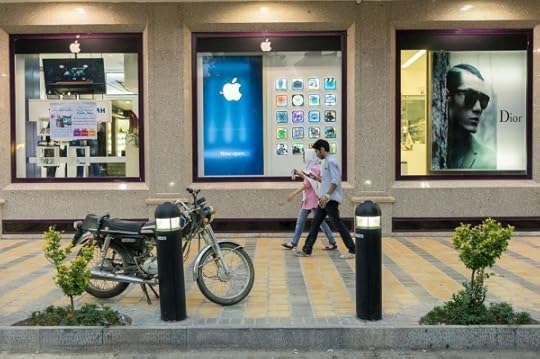
Photo via Thomas Cristofoletti/A Jazeera
Click to see the rest of Cristofoletti’s photo essay. 

26 signs you’re a crunchy mama
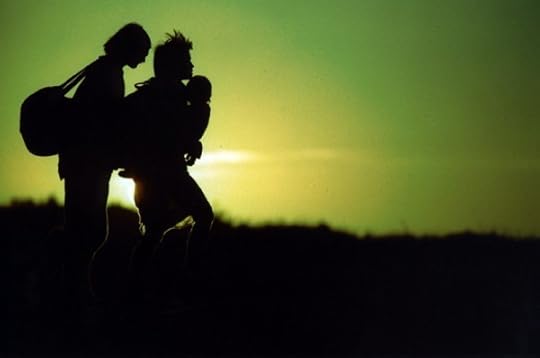
Photo: efedefoto
1. Making a peanut butter and jelly sandwich involves grinding the wheat, baking the bread, and picking the berries.
2. You gave birth at home. Unassisted. Out in the garden.
3. You froze your own placenta after birth and now enjoy daily “pick-me-up” smoothies.
4. Your Twitter profile proudly says “Intactivist.” In the grocery store, you ask strangers with baby boys whether or not they chose to genitally mutilate their child. You don’t even have a son.
5. You make your own cloth diapers. Which you line with inserts of moss. That you harvested in the forest and dried.
6. You practice elimination communication with your child on a composting toilet.
7. When your child walks through the front door from school and asks for milk, you whip out your breast.
8. You’ve breast fed someone else’s crying baby. Without asking.
9. You meticulously charted your cervical mucus when you wanted to conceive.
10. You think there’s nothing Rescue Remedy can’t fix.
11. A homemade book of placenta recipes, paired with Spiritual Midwifery and The Continuum Concept, is your go-to gift at every baby shower you’re invited to.
12. You have three children sleeping in your bed nightly. They’re all over the age of 10.
13. You won’t carpool with any parent who doesn’t drive a biofuel car.
14. Your baby sports an amber teething necklace.
15. The chicken pox party you threw was your most anticipated social event of the year.
16. Your baby’s first liquid after breast milk (age 5) was kefir. That you made yourself.
17. Facebook’s taken down your breastfeeding photos. On more than one occasion.
18. You know the difference between a wrap, a sling, and a mei tai and are greatly annoyed by those who don’t.
19. The ‘festive’ popsicles you give out to the kids at the neighborhood summer party are made from chlorella and spirulina.
20. You knit your children’s sweaters. From wool you spun. Cut from your own flock of sheep. And hand-dyed from wildflowers and grasses. Finished off with wood (sustainably harvested) buttons that you carved in the shape of fairies.
21. You linger outside health clinics to pass out fliers about the dangers of vaccinations.
22. Your child’s education is by a Waldorf homeschool co-op.
23. Scoring raw milk makes you tremor with excitement and satisfaction.
24. You don’t allow your child to play at any house that has a TV.
25. You never get asked to bring the team treat after soccer games, after that one time you showed up with homemade kale chips and kombucha.
26. Two words: diva cup. 

July 18, 2014
Spam for foodies (with recipes)

Photo: Ron Paul
WHEN I WAS A KID, my Chinese dad used to make me instant noodles with Spam and egg on top as an after-school snack. I loved the hot and savory soup, and always saved the perfect little rectangle of bologna-tasting meat with a gelatinous glaze for last. As I grew older and discovered the foodie scene, I shunned the canned meat as the very worst kind of processed food. Admitting to liking Spam was as bad as liking Big Macs or Cheeze Whiz among my Whole Foods-shopping, organic-wine-growing foodie friends.
But now, through my travels, I’m rediscovering the joys of Hormel’s treasure in a tin can. And I’m realizing that it’s not at all stigmatized in many parts of the world. No, it’s not the healthiest thing to eat out there, and yes, you might as well shoot the sodium right into your blood stream. But a little taste of Spam can be surprisingly yummy and comforting. It’s especially popular in Asia and the Pacific Islands. Look out for these “foodie” dishes the next time you’re traveling.
1. Spam musubi
This is said to be one of Hawaii-born President Obama’s favorite dishes. It’s simply cooked rice and grilled Spam wrapped with dried seaweed — a reflection of Hawaii’s Asian and Western influences. You can find it anywhere on the islands, and it makes a very satisfying post-surf snack.
Recipe:
1 can of Spam
2 cups of cooked rice
2 tablespoons sweet soy sauce
4 sheets of nori, cut in half
Cut Spam into eight equal pieces and fry until crisp on the outside. Add the sweet soy sauce to the pan, coat each piece, turn heat down to low. Wait until the soy sauce thickens. Place nori sheet down on a cutting board, scoop a generous amount of rice and pack it down. Add a slice of Spam and another layer of rice, packing it down. Wrap the nori around the rice and seal the edges with a bit of water.
2. Budae jigae, or Korean army stew

Photo: Gene Han
Food was scarce in Seoul after the Korean War. Resourceful cooks made use of surplus foods, including our very favorite meat in a can. Spam was mixed into a spicy soup flavored with kimchi and red chili paste. The dish is also called Johnson Tang, named after President Lyndon B. Johnson and tang, a word meaning soup. Have it with lots of rice and an OB beer.
3. Beer-battered Spam fries
Served at Maharlika in NYC, which specializes in Filipino cuisine, these fries have a crispy outside and a chewy, oily inside. Try them with banana sauce, the ketchup of the Philippines, and you won’t be able to stop after just one fry.
4. Goya champuru, or bitter melon and Spam stir fry

Photo: Pelican
This is a recipe from Okinawa, which comprises the southernmost islands of Japan. The bitter taste of the vegetable, which originates in China, marries beautifully with the salty, fatty taste of the canned meat that became common in this area after the US military set up a base on the islands. Given that Okinawa has more people aged 100 and over than any other region in the world, maybe this dish holds the secret to longevity.
5. Spam loco moco

Photo: Michael Saechang
Popular throughout the Pacific islands, this includes rice topped with a slice of Spam and an egg, all smothered in brown gravy. Be prepared for a serious food coma.
Recipe:
1 egg
Cooked rice
Hot prepared gravy
Hot pepper sauce
Tomato ketchup
Soy Sauce
Cut up a few pieces of Spam and fry to your liking. Fry egg (sunny-side up or over easy) in the grease left over. Assemble this dish by putting a bed of cooked rice in a large bowl, top with Spam, fried egg, and 1 to 2 ladles of hot gravy. Add hot pepper sauce, ketchup, or soy sauce to taste.
Want more Spam recipes? Find them here. Still can’t get enough of the stuff? Check out the annual Waikiki Spam Jam, during which several of Honolulu’s finest restaurants serve up some pretty creative dishes that would tempt any serious foodie. Give Spam another try. You may be surprised. 

17 different British accents [vid]
NOTHING TURNS ME ON MORE than a British accent. I don’t know what it is, but even if the speaker is hideous by most Western standards of attraction, once they open their mouth, I’m in love.
Aside from Siobhan Thompson’s ear for accents, this video is a seriously cool cultural and geographic take on the areas that make up Great Britain (and parts of Ireland). It makes me wonder how many American accents there are, and if it’s possible for myself to master them all (so far, I can only mimic a Queens, Brooklyn, Long Island, and a general “New Yawka” accent). 
H/T to BBC Travel.

Matador Network's Blog
- Matador Network's profile
- 6 followers




